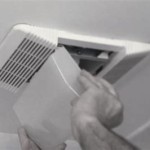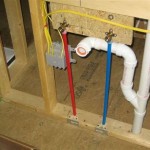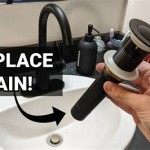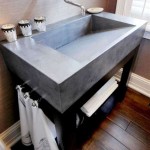How To Properly Vent A Bathroom Exhaust Fan Through The Roof
Proper ventilation is crucial for maintaining a healthy and comfortable bathroom environment. A well-vented bathroom minimizes moisture buildup, preventing mold and mildew growth, and removes unpleasant odors. Venting an exhaust fan through the roof is a common and effective method, but it requires careful planning and execution to ensure optimal performance and prevent leaks.
Planning and Preparation
Before starting any work, carefully plan the vent path. The shortest, straightest route is generally the most efficient. Inspect the attic space to identify any obstructions and determine the ideal roof penetration location. Avoid placing the vent near valleys or other areas where snow or debris might accumulate and block the vent. Ensure the chosen location provides sufficient clearance from roof framing members.
Gather the necessary tools and materials. These typically include a reciprocating saw or hole saw, roofing sealant, flashing, ductwork, insulation, clamps, screws, and a vent cap designed for roof mounting. Select ductwork rated for bathroom exhaust, typically smooth-walled metal or PVC pipe. Flexible ductwork should be avoided as it restricts airflow and can accumulate lint and debris.
Cutting the Roof Opening
After marking the desired location on the roof, carefully cut the opening. The size of the hole should match the diameter of the ductwork plus the necessary clearance for the flashing. A reciprocating saw is useful for cutting through shingles and sheathing, while a hole saw attached to a drill provides a cleaner cut for the final penetration through the roof deck.
Installing the Flashing
Proper flashing is essential for preventing leaks. Install the flashing according to the manufacturer's instructions. Generally, this involves sliding the base flashing under the shingles uphill from the opening and securing it to the roof deck. Apply a generous bead of roofing sealant around the edges of the flashing to ensure a watertight seal. The upper portion of the flashing should then be installed over the shingles and sealed similarly.
Connecting the Ductwork
Connect the ductwork to the exhaust fan housing and run it through the roof opening. Secure the ductwork to the roof framing members with appropriate clamps or straps. Ensure the ductwork is properly insulated to prevent condensation, especially in colder climates. Insulation also helps to minimize noise transmission through the duct.
Installing the Vent Cap
Attach the roof vent cap to the flashing and ductwork. Ensure the cap is securely fastened and properly sealed to prevent water intrusion. Select a vent cap designed for roof mounting and that incorporates features like a backdraft damper to prevent cold air from entering the ductwork.
Sealing and Finishing
Thoroughly inspect all connections and seams for any gaps or potential leak points. Apply additional sealant as needed to ensure a completely airtight and watertight seal around the flashing, vent cap, and ductwork penetration. Clean up any debris generated during the installation process.
Testing the Ventilation System
Once the installation is complete, test the exhaust fan to ensure it's operating correctly. Turn on the fan and check for proper airflow at the vent cap. Place a tissue near the vent opening; it should be drawn towards the vent, indicating adequate suction. Also, check for any unusual noises or vibrations that might indicate issues with the fan or ductwork.
Maintaining the System
Regular maintenance is essential for optimal performance. Clean the vent cover periodically to prevent dust and debris buildup, which can restrict airflow. Inspect the ductwork and vent cap annually for any signs of damage or deterioration. Replace any damaged components promptly to maintain the system's effectiveness and prevent leaks.
Safety Considerations
When working on the roof, always prioritize safety. Use appropriate safety equipment, including a sturdy ladder, safety harness, and non-slip footwear. Be mindful of power lines and other hazards. If you are uncomfortable working at heights or are unsure about any aspect of the installation, it is advisable to consult with a qualified roofing professional.

Installing A Bathroom Fan Fine Homebuilding

Venting A Bath Fan In Cold Climate Fine Homebuilding

Blog

Bathroom Exhaust Fans Chicago Suburbs

Bathroom Exhaust Fans Building America Solution Center

Bathroom Fan Venting Tips Gui

Adding A Bathroom Fan Fine Homebuilding

Venting A Bathroom Through Sips Fine Homebuilding

Bathroom Vent Piping To Near Exterior Inspecting Hvac Systems Internachi Forum

Venting A Bathroom Through Sips Fine Homebuilding
Related Posts







